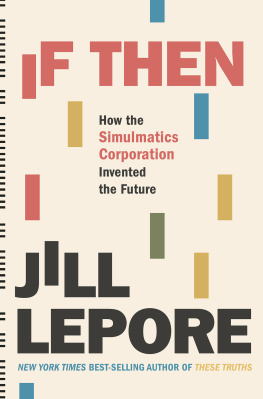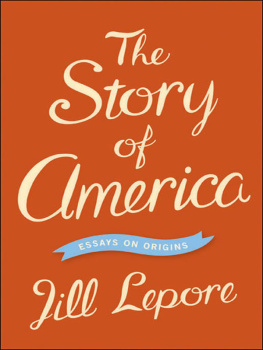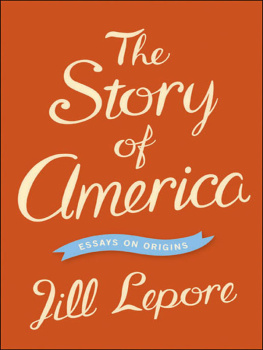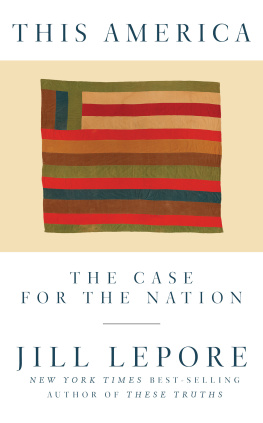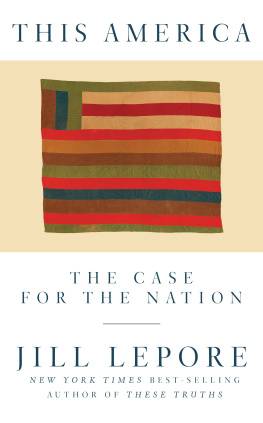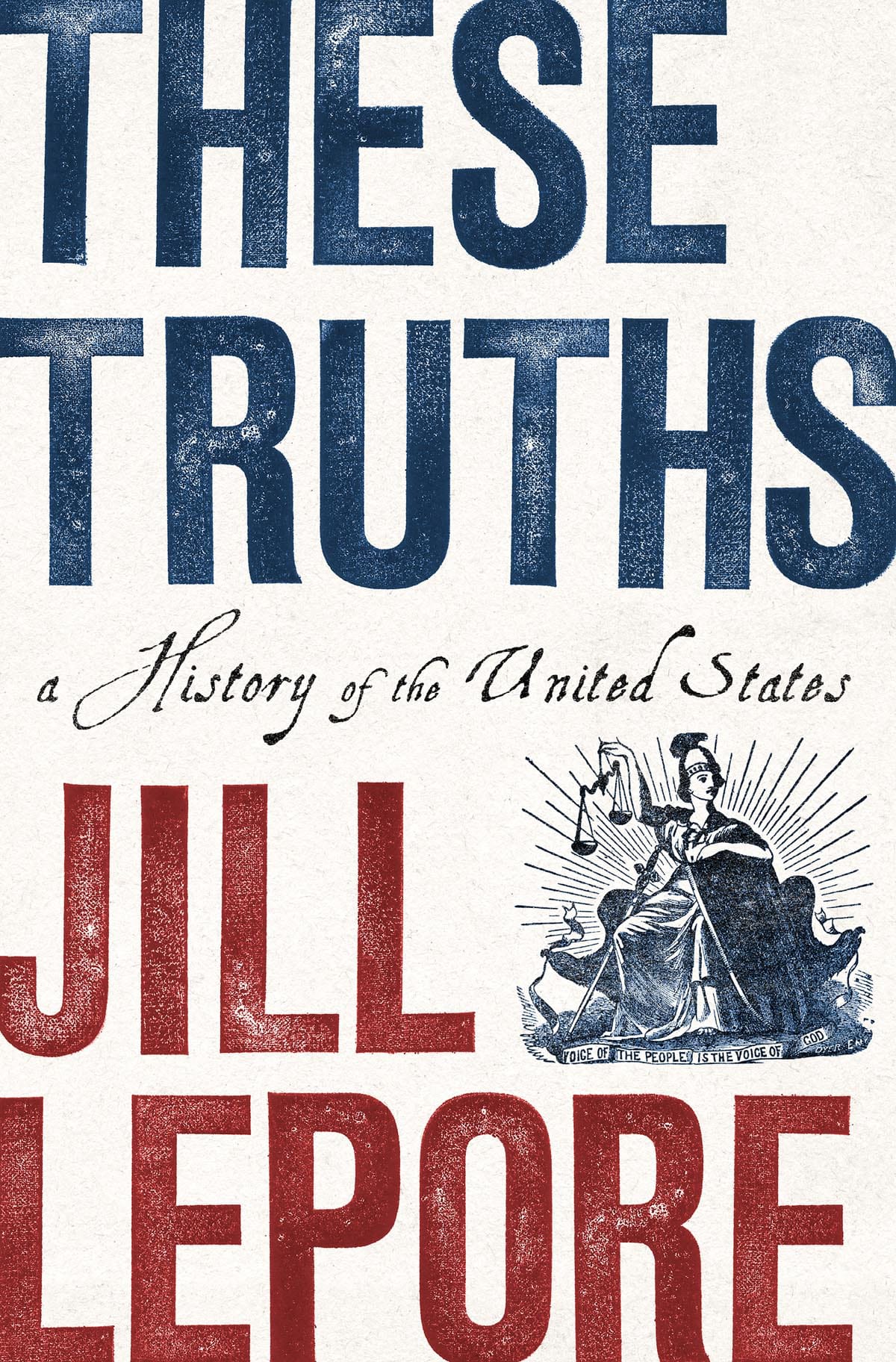THESE TRUTHS

A History of the United States
JILL LEPORE

W. W. NORTON & COMPANY
Independent Publishers Since 1923
New York London
Americans assembled on the National Mall for the 1963 March on Washington.
We must disenthrall ourselves,
and then we shall save our country.
Abraham Lincoln, 1862
CONTENTS





T HE COURSE OF HISTORY IS UNPREDICTABLE, AS IRREGULAR as the weather, as errant as affection, nations rising and falling by whim and chance, battered by violence, corrupted by greed, seized by tyrants, raided by rogues, addled by demagogues. This was all true until one day, Tuesday, October 30, 1787, when readers of a newspaper called the New-York Packet found on the front page an advertisement for an almanac that came bound with tables predicting the Rising and Setting of the Sun, the Judgment of the Weather, the Length of Days and Nights, and, as a bonus, something entirely new: the Constitution of the United States, forty-four hundred words that attempted to chart the motions of the branches of government and the separation of their powers as if these were matters of physics, like the transit of the sun and moon and the comings and goings of the tides. It was meant to mark the start of a new era, in which the course of history might be made predictable and a government established that would be ruled not by accident and force but by reason and choice. The origins of that idea, and its fate, are the story of American history.
The Constitution entailed both toil and argument. Knee-breeched, sweat-drenched delegates to the constitutional convention had met all summer in Philadelphia in a swelter of secrecy, the windows of their debating hall nailed shut against eavesdroppers. By the middle of September, theyd drafted a proposal written on four pages of parchment. They sent that draft to printers who set the type of its soaring preamble with a giant W, as sharp as a birds claw:
We the People of the United States, in Order to form a more perfect Union, establish Justice, insure domestic Tranquility, provide for the common defence, promote the general Welfare, and secure the Blessings of Liberty to ourselves and our Posterity, do ordain and establish this Constitution for the United States of America.
As summer faded to fall, the free people of the United States, finding the Constitution folded into their newspapers and almanacs, were asked to decide whether or not to ratify it, even as they went about baling hay, milling corn, tanning leather, singing hymns, and letting out the seams on last years winter coats, for mothers and fathers grown fatter, and letting down the hems, for children grown taller.
They read this strange, intricate document, and they debated its plan. Some feared that the new system granted too much power to the federal governmentto the president, or to Congress, or to the Supreme Court, or to all three. Many, like sixty-one-year-old George Mason of Virginia, a delegate whod refused to sign it, wanted the Constitution to include a bill of rights. (A bill might be prepared in a few hours, Mason had begged at the convention, to no avail.)
Much of what they said is a matter of record. The infant periods of most nations are buried in silence, or veiled in fable, James Madison once remarked. Not the United States. Its infancy is preserved, like baby teeth kept in a glass jar, in the four parchment sheets of the Constitution, in the pages of almanacs that chart the weather of a long-ago climate, and in hundreds of newspapers, where essays for and against the new system of government appeared alongside the shipping news, auction notices, and advertisements for the return of people who never were their own masterswomen and children, slaves and servantsand who had run away, hoping to ordain and establish, for themselves and their posterity, the blessings of liberty.
The season of ratification was an autumn of ordinary bustle and business. In that October 30, 1787, issue of the New-York Packet, a schoolmaster announced that he was offering lessons in reading, writing, arithmetic, and merchants accounts in rooms near city hall. The estate of Gearey, Champion, and Co., consisting chiefly of a large and general Assortment of Drugs and Medicines, was to be auctioned. Many-masted sailing ships from London and Liverpool and trim schooners from St. Croix, Baltimore, and Norfolk had dropped anchor in the depths of the harbor; sloops from Charleston and Savannah had tied their painters to the docks. A Scotsman offered a reward for the return of his stolen chestnut-colored mare, fourteen hands high, lofty carriage, trots and canters very handsome. A merchant with a warehouse on Peck Slip wanted readers to know that he had for sale dry codfish, a quantity of molasses, ground ginger in barrels, York rum, pickled codfish, writing paper, and mens shoes. And the Columbian Almanack was for sale, with or without the Constitution as an appendix, at the printers shop, where New Yorkers might also inquire after two people, for a price:
TO BE SOLD. A LIKELY young NEGRO WENCH, 20 years of age, she is healthy and had the small pox, she has a young male child.
The mother was said to be remarkably handy at housework; her baby was about 6 months old, still nursing. Their names were not mentioned. They were not ruled by reason and choice. They were ruled by violence and force.
Between the everyday atrocity of slavery and the latest news from the apothecary there appeared on of that days New-York Packet an essay titled THE FEDERALIST No. 1. It had been written, anonymously, by a brash thirty-year-old lawyer named Alexander Hamilton. You are called upon to deliberate on a new Constitution for the United States of America, he told his readers. But more was at stake, too, he insisted; the wrong decision would result in the general misfortune of mankind. The United States, he argued, was an experiment in the science of politics, marking a new era in the history of government:
It seems to have been reserved to the people of this country, by their conduct and example, to decide the important question, whether societies of men are really capable or not of establishing good government from reflection and choice, or whether they are forever destined to depend for their political constitutions on accident and force.


